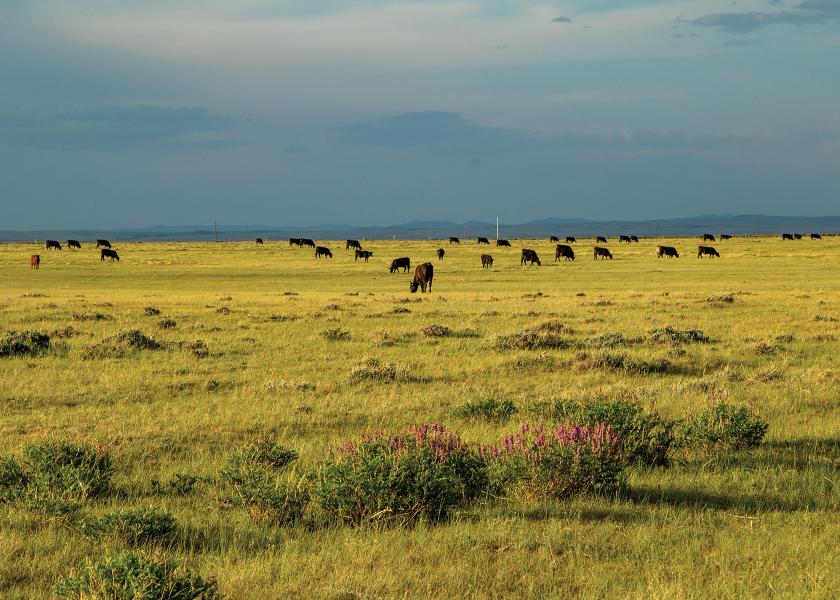Cattle and Sustainability Do Mix. Here’s Why.

The following is from past NCBA president Marty Smith, Florida.
When I consider the future of the cattle and beef industry, I start by looking back. My family has been operating a cattle ranch in central Florida continuously for nearly 170 years. When we began running cattle on our land, there were only 31 states in the union. Cattle have populated the state of Florida since Ponce De Leon landed on these shores and for 500 years, ranching has been woven into the fabric of our land. Today’s producers are proud to carry on this long legacy.
While a lot has changed over the years, what hasn’t changed is our love for our animals and affinity for taking care of the land. President Biden has made it clear that climate change will be a cornerstone issue of this Administration, and cattle producers are embracing this opportunity to tell the excellent story we have to share.

This week, against the backdrop of Earth Day and the climate summit in Washington, you will hear claims – many of them unsubstantiated – that cattle and sustainability can’t mix. That our operations and businesses can’t last. Here’s what I can tell you, as a producer whose ranch is older than the U.S. Department of Agriculture itself.
Farmers and ranchers are the original conservationists. Environmental sustainability is at the forefront of their daily decisions on the ranch; if they don’t continuously consider factors like soil health and carbon sequestration, water and runoff management, dust control and methane capture, then they will not be able to raise healthy animals and stay in business.
Today’s cattlemen and women are producing more high-quality, nutritious beef with less. Over the past 30 years, to produce one pound of beef, the amount of land used has decreased by 33 percent, the amount of water used has decreased by 12 percent, and the carbon footprint has shrunk by 16 percent.
Producers deserve recognition for their use of cutting-edge practices and technologies that improve environmental impact – but credit also needs to go to the cattle themselves. The much-maligned American beef cow consumes a diet that is 90 percent inedible to humans, diverting food waste from landfills and upcycling forage into nutrient-dense, affordable protein to feed people at home and around the world.
Thanks to the natural geography of the United States, cattle can graze on more than 660 million acres without any deforestation. The natural action of grazing and trampling strengthens deep root systems for native grasses, making our rangelands more resilient to erosion, improving the soil’s capacity to store carbon, encouraging biodiversity, and more. Cattle grazing also keeps the iconic prairies of the American landscape wide, open, and free from sprawling development, preserving a key aspect of our environmental and cultural heritage.
As ruminant animals, cattle play an integral role in the carbon cycle as well. Cattle consume grasses and emit methane, through belches, as part of the ruminant digestive process. Within 10 years, more than 90 percent of that methane combines with oxygen in the atmosphere and converts to carbon dioxide. The carbon dioxide is then absorbed by grasses via photosynthesis, which are eaten by cattle, and the process starts over.
Thanks to cattle producers’ improved management practices, technologies, and animal genetics, direct emissions from our industry account for only 2 percent of the nation’s overall greenhouse gas emissions.
In addition to stewarding our natural resources and leading the globe on environmentally sustainable beef production, cattlemen and women are also focused on maintaining and building operations that are economically sustainable.
When cattle farms and ranches can’t turn a profit and stay in business, the impacts on our environment are far reaching.
An estimated 2,000 acres of agricultural land are paved over, fragmented, or converted to other uses in the United States every single day. As operations go under, that land transforms from healthy grassland – which supports wildlife, stores carbon, and improves air and water quality – to urban and suburban development that takes us farther away from our emissions goals.
From a DC standpoint, lawmakers often tackle these issues as separate entities – but things like inequitable tax policy threaten the ability of the next generation of rural Americans to make a living in agriculture, and therefore things like the estate tax are an environmental issue as well. Policymakers are often reluctant to equate the “third rail” of tax issues with the beloved buzzword of sustainability, but cattle ranchers have known for generations that these economic and ecological factors are inextricably connected.
It’s not an exaggeration to say that no business community in American history has faced — and successfully risen to — more challenges than the ag community has, and cattle producers have been in the thick of it every single time.
The shared story of U.S. cattle farmers and ranchers is one of perpetual innovation and improvement. We are rooted in a proud history, but we’re constantly moving forward. Today’s cattle producer may ride a horse – but they have a tablet in their saddlebag, leveraging precision agricultural technology to reduce environmental impact and maintain the highest quality in our product. The American beef industry is sustainable – but the current lack of dialogue and understanding between cattle producers and policymakers is not.
Marty Smith led the National Cattlemen’s Beef Association (NCBA) in 2020 and currently serves as Chair of NCBA’s Sustainability Goals Task Force. An attorney and fifth-generation Florida rancher, Smith operates Smith Brothers-Wacahoota LLC, a cow-calf operation that dates back to 1852.







